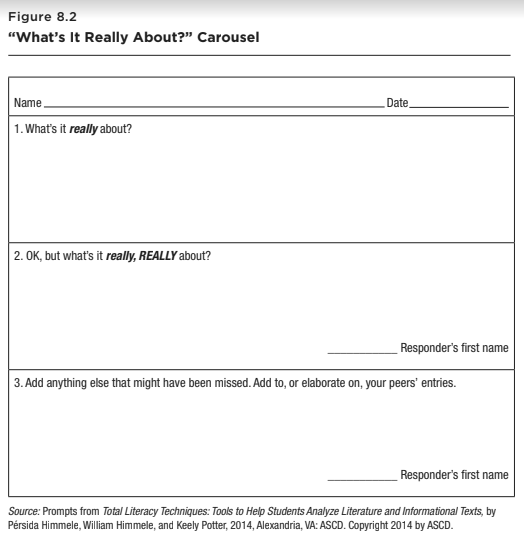"What's It Really About?" Carousel
What It Is
This activity is similar to the Debate Team Carousel except that it has only three rounds. It works well when students need to analyze content that is rich with themes, implications, inferences, and deeper purposes.
How It Works
- Ask students to respond to the first box by trying to dig deeply into the meaning behind the essence of what has been presented. They should not simply summarize what was taught, but they should look at the implications and the purposes behind the content. After students have responded to the first box, the teacher should signal the students to wrap up their responses and hand their papers to the person sitting to their right.
- Each student should have a new paper in front of them. They should read their peer’s response and respond to the question below their peer, by trying to dig deeper. “OK, but what’s it really, REALLY about?” At the teacher’s signal, students should wrap up their responses, write their name in the box, and pass the paper once more to their right.
- At this point students should read their peers’ responses and add any insights to the final box in the template, and add their names to the box. Papers should then be returned to their original owners.
- Ask volunteers to share highlights. Collect the templates, so that you can read select samples in order to get a feel for the depth of student thinking.
How to Ensure Higher-Order Thinking
The exaggerated emphasis on the word really serves to alert the students that you are no longer seeking a literal response to the prompt. You are wanting them to dig deeper and get to the essence of the problem. In order to do that, students are being asked to analyze the deeper issues inherent in the topic. By getting students used to the “What’s it really about?” question, and by explaining the increased expectations that come along with that question, you’ll be helping to ensure that students will be able to uncover the deeper meanings behind what is being taught.

Source
Himmele P., and Himmele, W. Total Participation Techniques: Making Every Student an Active Learner. ASCD, 2017, pp.121-123.

